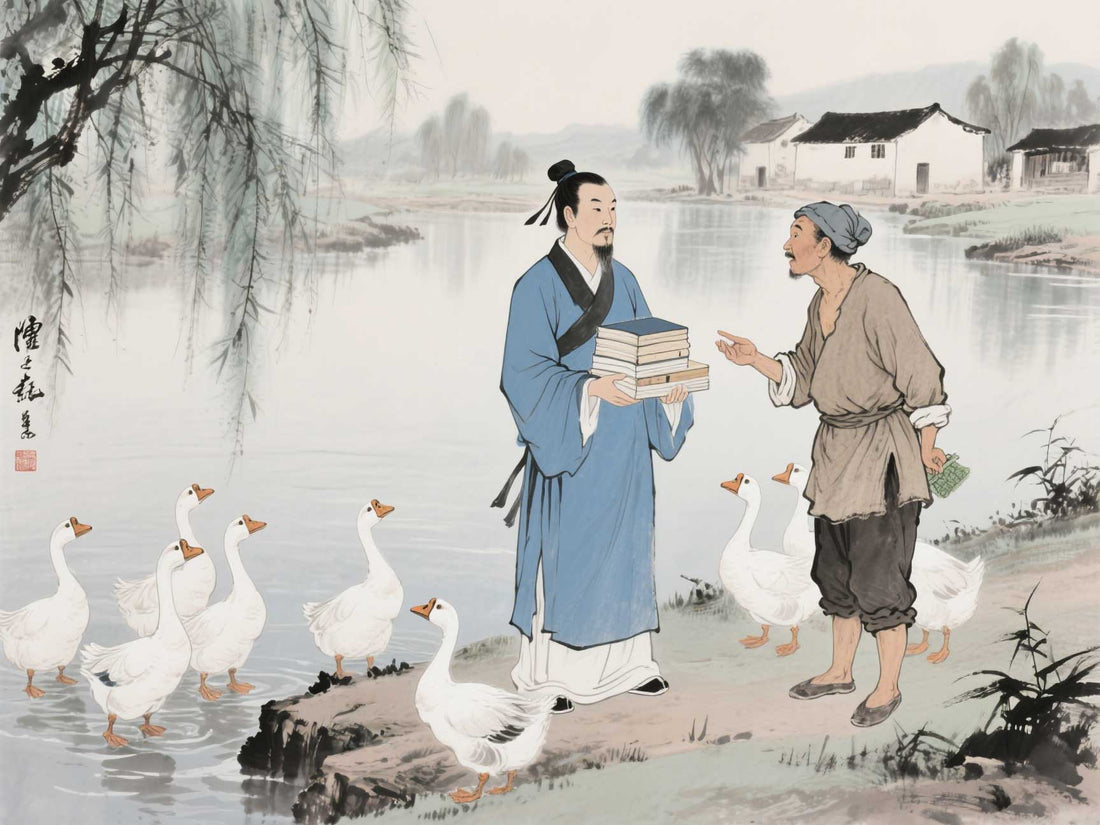
Wang Xizhi "Exchanges Books for Geese"
Share
story
Wang Xizhi loved geese and regarded their posture as a source of inspiration for his calligraphy. A Taoist priest in Shanyin (now Shaoxing) raised a group of geese with "clean bodies and white feathers". Wang Xizhi saw them and liked them very much and wanted to buy them. The Taoist priest took the opportunity to propose calligraphy in exchange: "If you can write the Tao Te Ching (or Huang Ting Jing)", I will give it to you as a gift." Wang Xizhi spent half a day writing the scriptures and returned with a flock of geese in exchange. This event was called "writing scriptures in exchange for geese", which demonstrated the elegant tradition of literati "exchanging art for things".
Version differences and extended details
-
Dispute over the Scripture <br>Some records claim that what Wang Xizhi copied was the "Huangting Jing", and his calligraphy was named "Huan E Tie" by later generations, while the version of "Tao Te Ching" can be found in earlier records. This disagreement may be due to confusion in the dissemination of Taoist classics, or the artistic interpretation of allusions by later generations.
-
Goose Pond and Creative Inspiration <br>Wang Xizhi raised the geese he had exchanged for money in the "Goose Pond" at his residence, and extracted the flexibility and strength of calligraphy lines from the posture of the geese "bending their necks and floating on the water", which influenced the brushwork of his masterpiece "Lanting Preface". For example, the characters "之" and "惠" in "Lanting Preface" are believed to incorporate the dynamic image of a goose neck.
-
An episode of accidentally cooking a goose <br>Another rumor has it that Wang Xizhi once wanted to buy a singing goose raised by an old lady but failed. Later, he took his friends to see it. The old lady mistakenly cooked the goose to entertain the guests, making Wang Xizhi sigh all day long.
Art and Cultural Inspiration
-
The creative concept of "Tao follows nature" <br>Wang Xizhi incorporated his observation of nature (such as the goose posture) into his calligraphy, reflecting the Taoist philosophy of "learning from nature". His writing of "Huangting Jing" (a Taoist health-preserving classic) is also regarded as an act of self-cultivation.
-
A symbol of the spirit of elegance <br>The allusion shows the traditional literati's pursuit of artistic purity. Li Bai's poem "If I meet the Taoist priest in Shanyin, I will write "Huangting" in exchange for a white goose" is an adaptation of this allusion. Later generations listed "Xizhi's love for geese" and "Tao Yuanming's love for chrysanthemums" as representatives of the elegant character of scholars.
Historical influence
- "The Goose Exchange Letter" is praised as a model of regular script, and is known as the "twin peaks of small regular script" together with Zhong Yao's "Proclamation".
- The Taoist's wise strategy of exchanging the goose for the book has become a classic example of "pleasing someone to their taste" in art history.
This story is not only a legend in the calligraphy world, but also reveals the deep connection between artistic creation, natural observation and spiritual cultivation.
